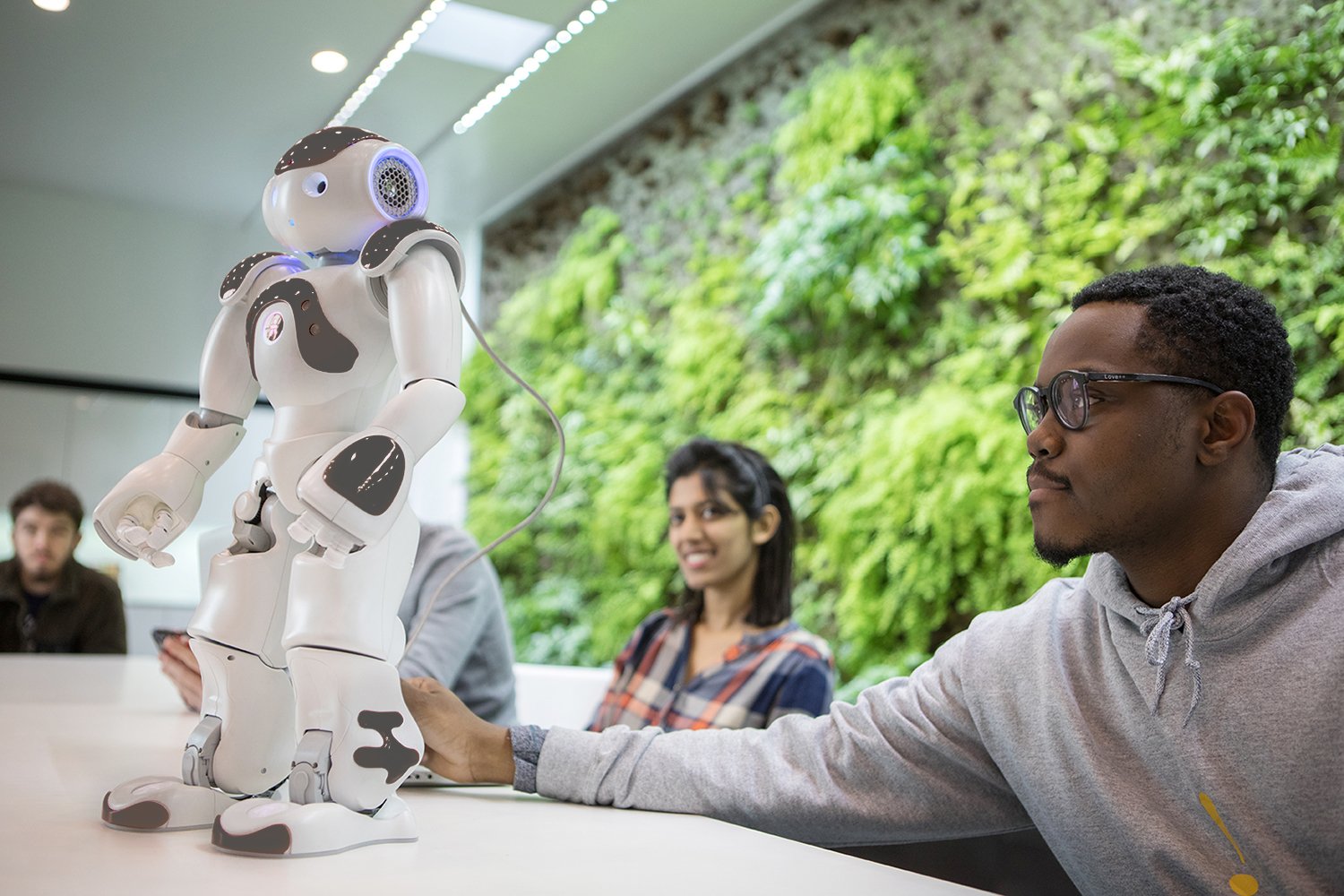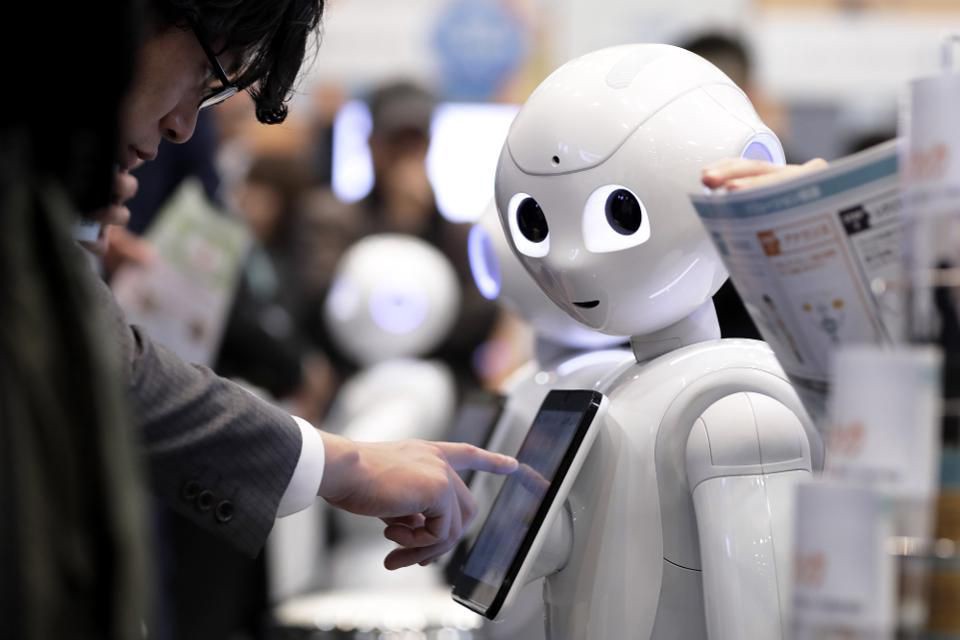By David Walker

Robotization allows people to more efficiently perform routine tasks. Rapid technological changes that we had in the last decade must increase the range of automated systems’ possibilities. This cannot but affect the student’s curriculum. Most countries, such as the USA, Korea, China, Turkey, are increasingly investing in STEM. This is the right strategy because innovation is everywhere around us.
Robotic systems are becoming more common every year. Such machines are useful for people of different specialties and students. So we decide to find out how advanced systems can affect the quality of education. This is an important issue for business leaders, students, and teachers who will need to improve their lectures.
There are thousands of enthusiasts who are confident that the time has come for AI systems. But that's not so clear considering the hardware costs. Of course, most students can use programmed robots in computer science lessons or during coaching.
The introduction of AI and Robots in Different Areas of Our Life – Main Prospects
In most cases, learning robots are AI-based systems that perform predefined actions. Such machines are equipped with LEDs, different sensors, and even a 4К webcam. In the era of digitalization, the introduction of advanced systems is possible in almost any area, and it is about the coming changes of the next 5-7 years.
In the context of technological progress, robotics in schools, colleges, and universities is considered promising. It makes sense in terms of saving time and money.
Robots & Automation
Robots can be useful in cases of task execution involving routine and repetitive algorithms. The implementation of AI-based systems will help reduce the number of human errors. A McKinsey Global Institute report shows that the greatest automation potential people have in transportation, warehousing, agricultural, retail and mining industries. If we talk about educational services, then automation has affected this area, but the implementation of innovations is very smooth and slow. This is about the fact that robotization is not yet a global trend, and not all educational institutions have the means to buy such equipment. So the upcoming changes are still ahead. The university rectors and managers will have to be smart and persistent to attract investment in this area.
Laboratory and Medical Research
Professions associated with intellectual work are often about routine. People are reluctant to take on such a mission. This is because most tasks are complex algorithms that can be completely replaced by computer systems. If people were still calculating in their minds or on paper, they would spend several days doing what computers solve in a few seconds. So there is no reason to pay an employee for this job, even with a minimal opportunity to provide automation.
The same situation with any medical research. People working in this area often take a risk. This is due to the use of chemicals, acids, specialized equipment, and others. In order to avoid work-related injuries and other problems, we should most intensively introduce innovations in medicine and training for doctors and pharmacists.
The AI market for this area was worth $667 million last year. Experts predict that it will increase to nearly $8 billion by 2022. Automatic devices will save doctors and trainees time, help diagnose and, as a result, save many lives. All of such factors will have a huge impact on reducing the cost of healthcare and education in this area.
How to Save Time and Money With AI in Education?
There are many ideas for using robots in education. For creative students and teachers, this is the best way to get most processes to enliven. AI-based robots can be activated by appropriate impulses such as a flashlight, voice, or touching a sensor. Such devices are capable of reading instructions by scanning QR-codes. The most advanced platforms give people the following benefits:
- Various automated systems, like AI-based teaching programming, help to practice creativity and the ability to independently find solutions in odd situations. Although this is not the easiest task and only technical specialties can do it. The combination of rigorous mathematical thinking with digital creativity is increasingly practiced at American, Korean, and European universities. We're talking about training analysts, marketers, designers, and other professionals.
- People have extra time for practice. Students are more and more inclined to follow the teacher's instructions and the algorithm that always has a positive effect on the quality of education. So, if a university needs to organize practical training for students, the best way would be to equip a room with robotic systems. In this case, the trainee will have a certain number of attempts, and there will be no need for strict supervision of the laboratory assistant. This is because most AI-based systems are capable of monitoring states and experimental parameters. If something goes wrong, such a system will block access.
- Experimenters can speed up processes and provide a secure environment. We talk about data processing, aggregating, authentication, search, and so on. All such tasks are successfully performed by robotic systems. Most advanced systems are equipped with biometric security.
Transport, manufacturing, mining, agriculture, trade — it is in these industries that robots will be useful. All in all, millions of positions can be fully automated in the world. This also applies to educational institutions of various types. Experts assure that all teachers should use machines and this learning process will be comfortable for most students. Plus, this is a significant cost saving. So, AI-based systems have a good perspective in the future and this is definitely a great investment case.
Summary
Children can learn how to program the movements and clicks of the robot at school. We’re talking about programming systems such as an automatic vacuum cleaner that sucks in dust and turns at a right angle when it approaches an obstacle. The need for automation in different areas of our life is increasing day by day, which means that AI-based systems will only become more complex. We have only told you about a few cases and the developers are unlikely to stop there.
Programmers won't surprise anyone with automated equipment, and they have to create more advanced models. Cutting-edge innovations are related to the integration of different sensors on one platform, improvements to biometric readers, and more. Very often this is associated with spending a lot of time and money. But what about the opposite effect? Can robots help people save funds? Of course, in most cases, this is possible. Investments in such an industry are rewarding.
Learn more about Robotics with RobotLAB Inc

About the Author
David Walker economic writer and content creator. Strives to meet your requirements within your given deadline. David has acquired over ten years of work experience in finance and investing. Now he working for the company ICOholder.


